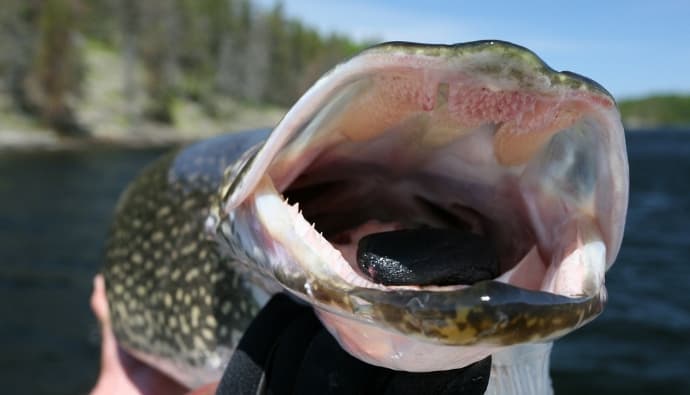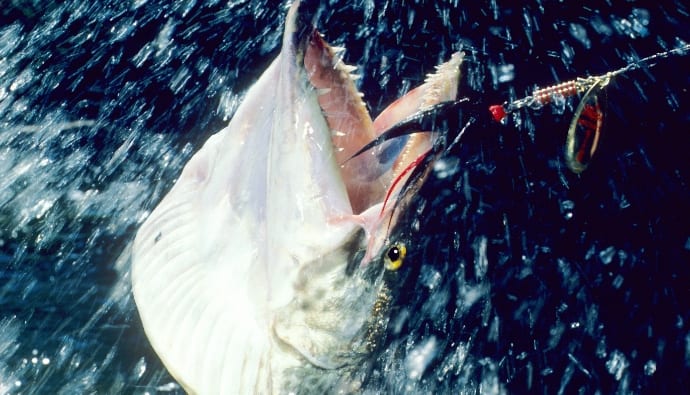Don’t be scared. Give chub mackerel a try!
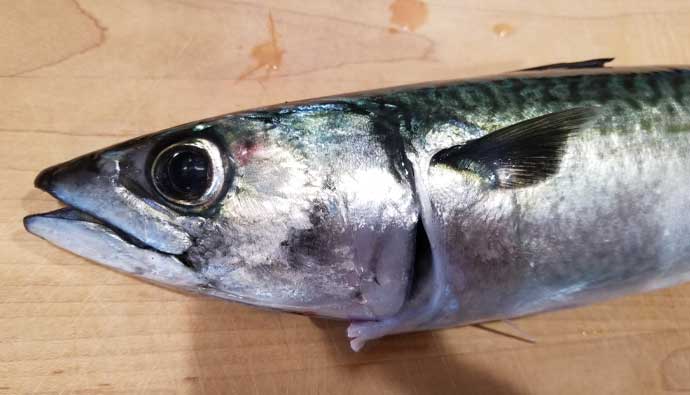
Chub Mackerel (Pacific Mackerel) Facts
| Scientific Name: | Scomber japonicus |
| Common Name(s): | Blue mackerel, chub mackerel, striped mackerel, American mackerel, |
| Family: | Scombridae |
| Characteristics | Slender torpedo-looking fish that have a dark green/blue back with wavy dark lines. It closely resembles the Atlantic chub mackerel. It has 2 dorsal fins. Compared to the Atlantic chub mackerel, this fish has only 9 or 10 spines in its first dorsal fin. The anal fin and dorsal fin help them with stability. It’s a smaller fish compared to its relatives. |
| Depth Range | Known to go to 990 feet, but like the surface. |
| Largest Size | Known to reach 25 inches |
| Lifespan | 11 years |
| Safe to Eat? | Yes |
| Status | Least Concerned |
| Diet | It feeds on its own young and that of other fish. |
For more information about chub mackerel, check out the Fish Contamination Education Collaborative.
Chub Mackerel Fishing
Chub mackerel are easy to catch, and much of what we wrote in our Spanish mackerel guide applies to this fish. Chub mackerel migrate in large schools. You can’t find it in the Indian Ocean, except for South Africa.
Since our other guide talks more about catching these mackerel with a Sabiki rig, we’ll focus this guide on using lighter outfits to play with these fish a bit more before bringing them in.
How to Catch Chub Mackerel
Let’s chat about fishing for Pacific Chub Mackerel.
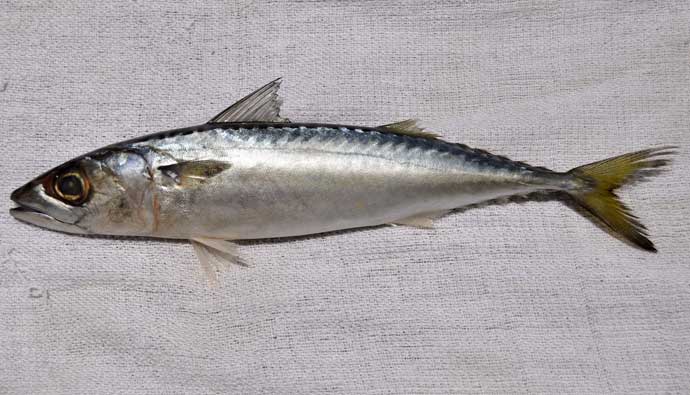
Chub mackerel actually fight really well on light tackle. They are a schooling type fish, and many locals fishing from boats and piers keep these fish to eat.
In British Columbia, they are actually invasive and have been one of the reasons for the declining salmon population, so if you’re up in that area, don’t throw them back. They actually come up from the southern waters because of the warm current, and they pretty much eat all the salmon fry.
A light spinning outfit, like a four-pound test, and it’s pretty awesome.
These aren’t picky fish.
I’ve seen anglers catch chub mackerel on a little rooster tail. It’s a primarily freshwater fishing lure, and it works great. They just go crazy over them and work on the light road as well.
Chub mackerel are fast. Most of them are around a foot long, but sometimes you get lucky and can catch some bigger ones.
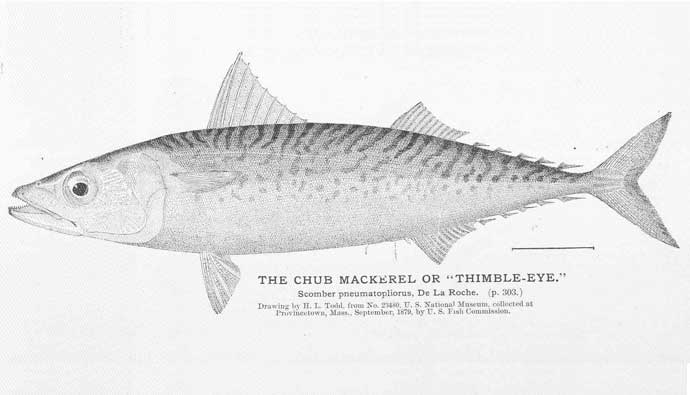
Pacific Chub Mackerel Baits
Here’s a list of baits and lures that I’ve caught these chub mackerel fish on:
- Berkley Gulp! 2-inch sandworms (camo and red)
- Squid
- Most jerk baits
- Most soft lures
- Sabiki Rigs
How to Clean Chub Mackerel
Most of the time, you’ll catch these chub mackerel fish while you’re trying for other species. To anglers on party boats, these will be looked at more as a nuisance than a fish to target.
Chub mackerel really is an awesome fish. This fish doesn’t get the credit it deserves. It’s cheap to buy, easy to catch, it’s flavorful (although some don’t like the taste). Chub mackerel is an oily fish that’s full of omega-3 healthy fats and unsaturated fatty acids. It’s good for you. Let’s take the fish that you’ve just caught and take the fillets off, pan fry it, and serve it with some pickled beetroot salad.
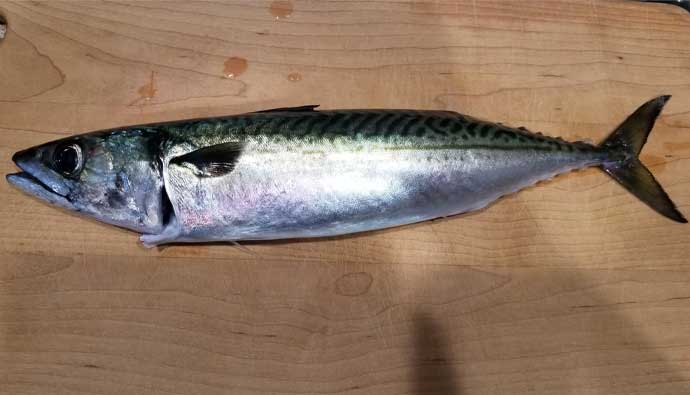
First, start by making an incision around the head without going through the backbone. Once you’ve joined the two head cuts, pull the head off, and you’ll get most of the guts out in one go.
It’s a handy trick for small fish like these chub mackerel.
Next, we need to take the fillets off. Put your knife along the backbone where the head used to be and cut all the way down to the tail. Remove that fillet, flip the fish over, and do it to the other side.
We haven’t finished yet.
You’ll need to take out the bones down the lateral lines. You’ll do this with the knife making a V-cut down the center of the fillet. The bones will then come out as one solid unit. Do this to the other fillet, and you’ll be left with two boneless fillets ready for the pan.
Chub Mackerel Recipe
According to some of my English friends, they recommend pairing a chub mackerel with something that has sweet tartness because it’s just quite an oily fish. That paired flavor cuts through that fattiness.
Now that we have our fillets, it’s time to throw them on the heat.
Get your pan nice and hot.
If you have large fillets, don’t be afraid to cut chub mackerel in half so you can share it with your friends. Rub some olive oil on the skin side of the fish and add a little salt.
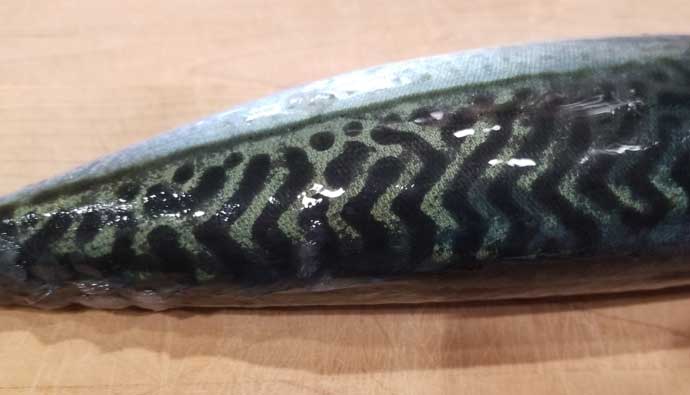
Once you put the chub mackerel in the pan skin side down, the key thing to remember is don’t fickle with the fish. Don’t move them. Barely touch them, so they cook and get a nice crisp skin. We’ll cook these three-quarters of the way done on the skin side, then turn over for that last couple of minutes to finish up.
Press Your Fillets Down
Once your pan is nice and hot, put your chub mackerel fillets in the skin side down. Use your hand to put a little bit of pressure on the fillets to increase the surface contact of the skin on the pan. If the fish puff up, you know it’s fresh. It should be fresh because you caught it the day of :).
After a few minutes, flip the fillets over and cook the other side.
Plate the chub mackerel, and it’s ready to eat. If you’d like, pair it with a pickled beetroot salad. Here’s a simple recipe to try out, which could be made the day before you cook your chub mackerel.
Pickled Beetroot Salad
Ingredients
- Two large beetroots
- 125ml white wine vinegar
- 125ml of your favorite jam
- 1 tsp mustard
- pinch of salt
Directions
- Put salt on an oven tray and cut up some beets, and roast them in the oven for an hour and a half.
- Then add 125ml of white wine vinegar and add 125ml of your choice of jam to give it that sweetness into a pan and reduce that down to a glaze.
- Add a teaspoon of mustard.
- Spread the mixture on top of the roasted beetroots.
- Put the mixture in the fridge to chill overnight.
Chub Mackerel Final Thoughts
The chub mackerel isn’t commonly known as an eating fish in all circles, and some people either love them or hate them. Having caught a few large ones myself and eaten them, I’d have to say I’m a fan.
They are full of healthy omega-3 oils, they aren’t overly fished to the point that you should be concerned, and you can eat up to 4 servings per week in Southern California.
Overall, the chub mackerel is a great staple fish to eat on the regular.




 Facebook
Facebook YouTube
YouTube



